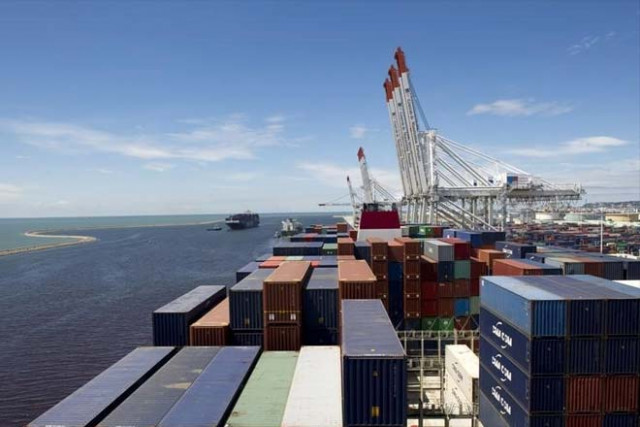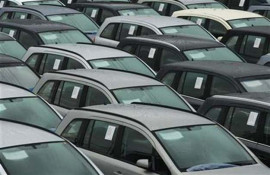
Although the trade deficit and current account deficit have receded from their record peaks reported in 2018 due to lower import demand and inflow of higher remittances, the decline in the trade deficit has to be sustained. A lack of export growth is disconcerting.
Exports averaged approximately $25 billion between 2011 and 2013 but since then, they have declined. In 2016, their amount was recorded at $20.5 billion. Efforts to boost exports have to be highly prioritised with policies for invigorating export-oriented investments in the country.
The lack of investment in the private sector is a major factor contributing to the chronic deficit in the trade balance.
According to the Analysis of Main Aggregates of National Accounts by the UN Statistics Division, the final consumption expenditure in current US dollar value in Pakistan has historically hovered around 90%, suggesting a consumption-based economy. On the other hand, India and Bangladesh have both reported declining trends.
Exporters protest against withdrawal of zero-rated regime
India reported levels below 70% in mid-2000s while consumption expenditure as a percentage of GDP for Bangladesh was less than 75% in 2017.
Considering the data of gross savings as a percentage of GDP extracted from the World Bank Indicators, Pakistan reported the lowest value amongst the three largest economies in South Asia.
In 2017, gross savings for Pakistan stood at 20% of GDP. Gross savings for Bangladesh and India surpassed 35% and 29% respectively. Although, in the early 1990s, Pakistan reported higher gross saving rates relative to its neighbours as it liberalised its financial sector, it was not able to sustain growth levels.
The growth remained short-term as the gross domestic saving rate decreased from 26% in 1991 to below 20% in 1993. In 2008, Pakistan reported 16.9%, the lowest since 1976. Higher gross saving rate helps not only boost investment but also lower the demand for funds from multilateral agencies.
Gross capital formation, an indicator of the addition of fixed assets in the economy, for Pakistan has consistently been around 15% since the 1970s. It experienced some periods of short-term growth as it almost touched the 20% level in the early 1990s and in the mid-2000s. However, since 2014, it has hovered around 14.64% and 15.78%.
On the other hand, Bangladesh and India have reported much higher levels. In 2010, India reported gross capital formation as a percentage of GDP at almost 40%. In 2017, both countries reported values of more than 30%.
Gross fixed capital formation (GFCF) in current US dollar value, which includes investment in domestic assets ranging from land, capital and infrastructure, has increased at a compound annual rate of 5.1% for Pakistan between 2007 and 2017, relative to 13.6% for Bangladesh and 5.85% for India.
Finance adviser says zero-rated regime intact for exporters
However, India reported significant growth between 2001 and 2010 of approximately 20% a year.
Similarly, Pakistan did achieve high growth rates of more than 31% in 2005 and 2006, but that too was short-lived. This, however, coincided with the period when Pakistan undertook trade liberalisation.
Credit flow
Domestic credit to the private sector as a percentage of GDP in Pakistan has been dismally low.
It fell from 28.7% in 2008 to 15.4% in 2015. On the other hand, the average for the South Asian economy increased sharply in the mid-2000s, averaging over 45.7% in 2017. The lack of access to banking credit by the private sector has a considerable effect on its ability to invest.
Exports as a percentage of GDP for Pakistan, recorded at 8.29% in 2017, were at its lowest level since 1986. Pakistan has never been able to increase it past 15.5%, the value it reported in 2003.
On the other hand, both India and Bangladesh reported 19% and 15% respectively in 2017. Their highest levels, surpassing 20%, coincided with the years their gross fixed capital formation increased at higher rates.
Imports of goods and services as a percentage of GDP for Pakistan have been the lowest among the three countries since the mid-2000s as the economies liberalised their trading regimes.
In 2017, India imported goods worth 22% of its GDP, Bangladesh imported 20.3% and Pakistan imported 17.8%. India and Bangladesh peaked at 31% and 28% of GDP in 2012. Pakistan has been relatively averse to imports, which peaked at 23% of GDP in 2008.
Using data extracted from the UN Comtrade, approximately 4% of total imports into Pakistan were consumption goods along with food and beverages for household consumption as classified in the broad economic categories.
Contrary to popular perception, imports into Pakistan do not mostly comprise consumption goods. Capital goods and fuels and lubricants account for more than 45% of total imports into Pakistan.
Therefore, recommending a ban on imports of consumer products is unlikely to achieve its purpose of reducing the trade deficit drastically and increasing domestic production.
It may instead further inflate the size of informal economy and increase the administrative and monitoring costs incurred by customs and tax collection authorities. Furthermore, it may lead to a loss in customs revenue without generating new business opportunities.
Instead, reduction in discrepancies in import invoicing and improvement in competitiveness of domestic businesses will pay better dividends.
Wholesalers and retailers as well as transportation services and logistic companies are major contributors to the services sector. Higher mark-ups earned on imported goods can help create domestic value addition and increase employment in this sector.
A thorough analysis of the damage to the domestic economy needs to be undertaken in order to determine the impact. The services sector in Pakistan has been one of its most vibrant in recent years.
According to the Business Confidence Survey of the State Bank of Pakistan, the services sector reported higher levels of business confidence in April 2019 than that reported for the overall economy.
It is imperative that measures are taken to increase private investments and improve global competitiveness of Pakistani exporters rather than promote the sale of low-quality products. Export-oriented investments must be attracted.
The writer is the Assistant Professor of Economics and Research Fellow at CBER, IBA
Published in The Express Tribune, June 17th, 2019.
Like Business on Facebook, follow @TribuneBiz on Twitter to stay informed and join in the conversation.


















COMMENTS
Comments are moderated and generally will be posted if they are on-topic and not abusive.
For more information, please see our Comments FAQ